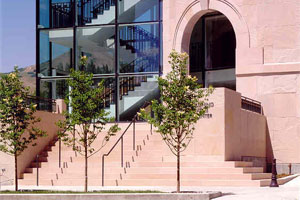Embracing Green

"Green" is everywhere. Green magazines are being published in abundance, you can buy practically anything in its "green" version, and it seems every other story on the "Today Show" is about how to cook, decorate, wear or simply live, green. The green phenomenon has blossomed past a unique and slightly off-putting trend to a common buzzword on the tip of every tongue in America.
But that's my concern: Is "green" the new "organic" of this decade? Remember in the '90s, when everything was organic, from soup to shoelaces? What we're seeing is that in a society that is preaching going green globally, it's probably easier to embrace the concept than try to avoid it.
As we learn more, we realize that the myths about the overwhelming expense of building green just aren't true (average cost increase is 2 percent over a conventional building). The opposite, in fact, is true, when you take into account that greening a project from foundation to roof usually provides long-term cost savings when energy efficiencies and sustainability are considered.
There is promise that the greening of our buildings could be a real standard in America, and here's why: Builders are embracing it. Educators are embracing it. Some politicians are embracing it. And, as time passes, I think encouragements of people to conserve energy in a preventative manner will turn to ordinances and laws.
Meanwhile, "Bravo!" to our building industry for approaching green as though it were a verb, and walking the walk.
Consider these benefits to greener buildings:
- When we use less energy, we'll use less water, because energy conservation measures address the costs of pumping a building's water supply.
- Specific building features are associated with higher occupant performance, as corporate tenants of green buildings have found it easier to attract and retain talent.
- Studies of occupants' work performance in green buildings compared to non-green workspace showed people did better on tasks when their workspaces had features, including comfortable temperatures (better clerical performance and logical thinking), higher ventilation rates (productivity increases and reduced absenteeism and illness) and more daylight (better productivity, retail sales and school test scores).
- Since people costs amount to 88 percent of total costs over a commercial building's lifespan, even a 1 percent increase in productivity can have significant, positive effects on corporate performance. Factor in the lower operating costs and reduced risks associated with greener buildings, and corporate bottom lines look even better.
The lesson is simple: It might be easier to understand an inevitably greener-by-the-day world by embracing it. I'd love to hear or read your thoughts on the topic of green building. Contact me at 770-431-0867, ext. 225, or jmorrell@lionhrtpub.com.
About the Author
Jennifer Morrell was the editor of Masonry magazine. She has 20 years of experience in the publishing industry as a writer and editor, covering such topics as real estate and construction, insurance, health care, relationships and sports. A graduate of The University of Georgia’s Grady College of Journalism, she earned a Bachelor of Arts degree in magazines and is an award-winning newspaper columnist.


















